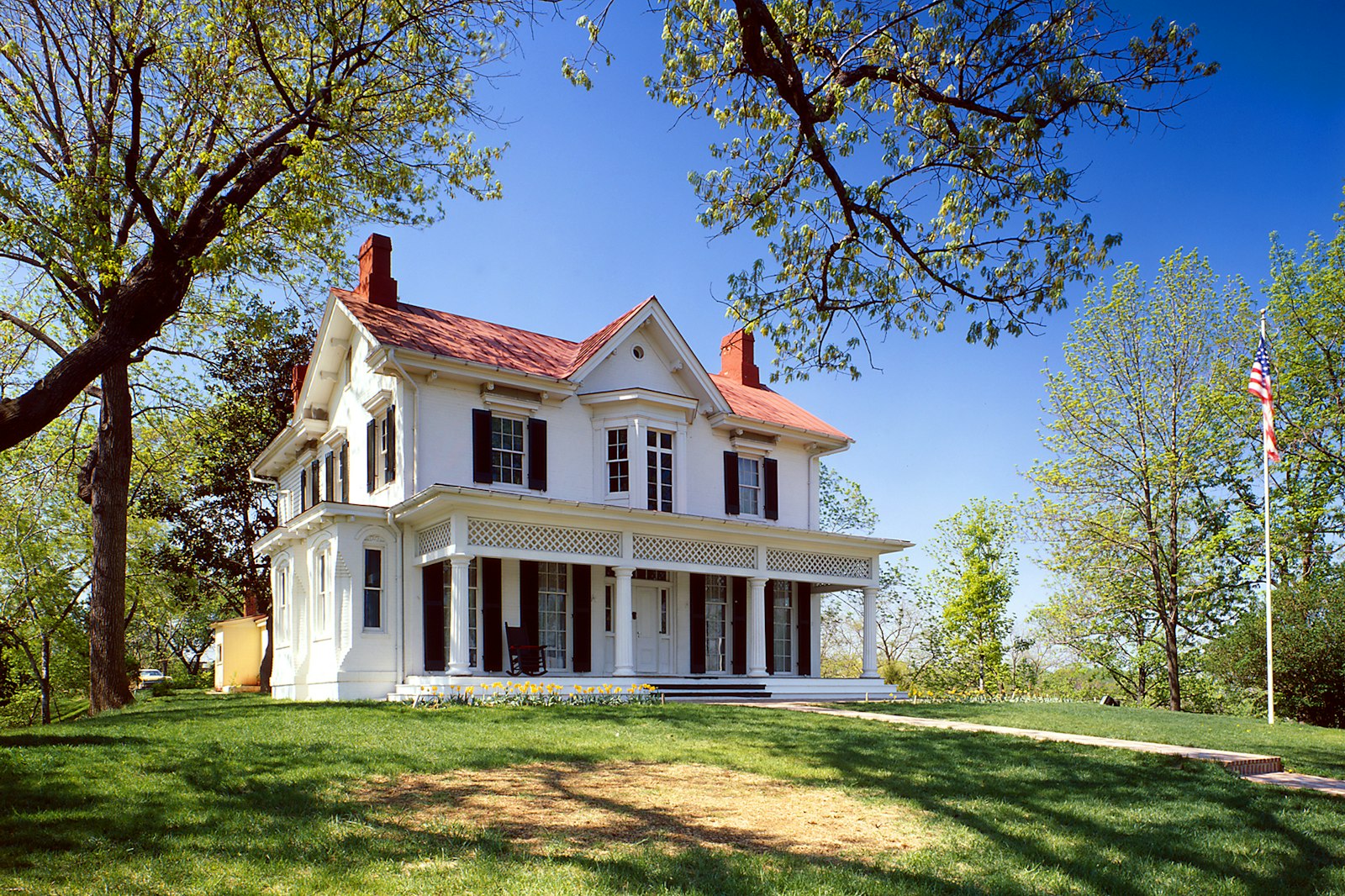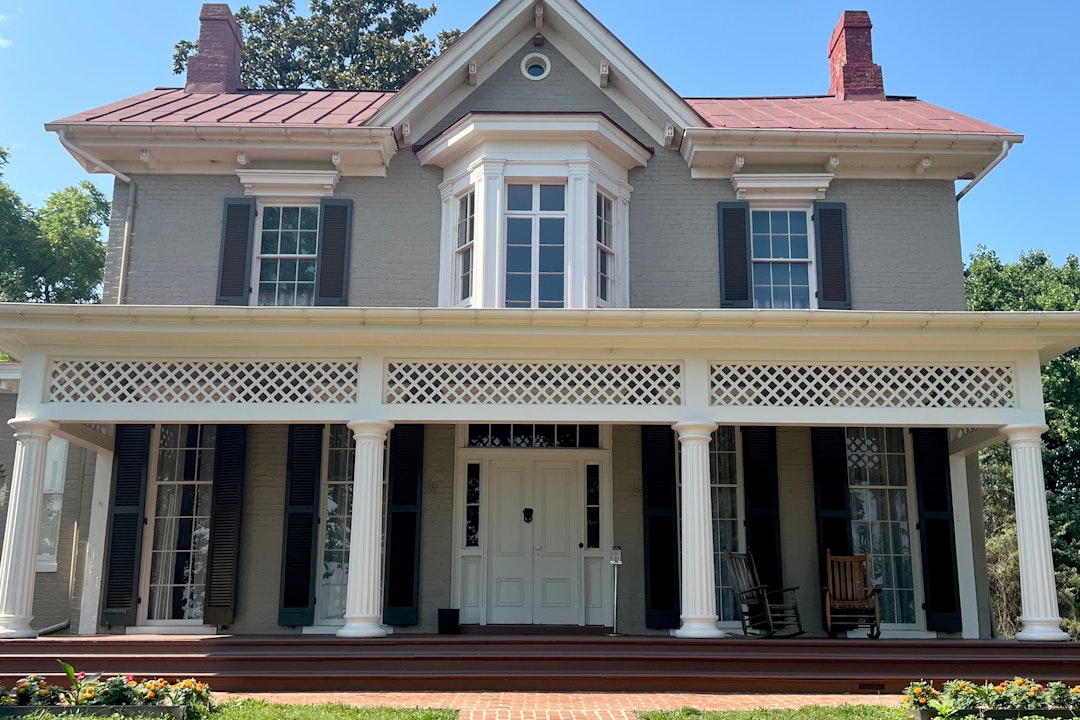

.
.
Frederick Douglass’s home in Washington, D.C. has reopened to the public following closure during the pandemic and subsequent renovations, with the National Park Foundation (NPF) continuing to contribute to the success and future of Frederick Douglass National Historic Site. The site shares with visitors the history and legacy of Douglass (1818-1895), who was born into slavery then escaped and shaped the nation with his activism, writing, public service, and perspectives on race, democracy, and freedom.
Stretched across eight acres in D.C.’s Anacostia neighborhood, Frederick Douglass National Historic Site protects and preserves Cedar Hill, the home where Douglass lived from 1877 until his death in 1895. The beautiful historic home has been restored to reflect how it appeared during Douglass’s final years. It’s furnished throughout with his original objects – an extensive collection of books that shaped his thinking, the pen he used to write his memoirs, the writing desk where he crafted speeches, his walking sticks, and more – and shares his life and legacy with visitors.
NPF played a key role in the renovations that enabled the site to reopen to the public in summer 2023 by supporting a critical infrastructure upgrade. A grant from NPF funded the design and installation of a new heating, ventilation, and air conditioning system, which brings the home up to current standard, protects the interior and the site’s collections and artifacts, and keeps the visitors and staff comfortable on hot summer days. The new HVAC system can be monitored remotely and has an emergency generator to ensure museum collections remain protected during power outages.
The home is remarkable in its preservation of many original items complemented with park ranger storytelling that brings Douglass’s life and objects to life for visitors. Interpretive rangers show visitors where Douglass worked and lived – where he was a father, a husband, and a writer. Bedrooms, family rooms, and Douglass’s office are preserved and filled with some 3,000 items that belonged to Douglass, including his book collection. Visiting the house enables visitors to stand in Douglass’s footsteps in the very spaces where he lived and worked.
Supporting Future Planning for the Site


A grant from NPF is supporting Frederick Douglass National Historic Site to complete a master plan for the entire eight-acre site. The site includes several buildings: the Frederick Douglass Home, the Caretaker’s Cottage, and the Visitor Center, as well as an auxiliary building across the street, all of which will be analyzed as part of the plan.
NPS completed a Cultural Landscape Report and Historic Structure Report for the park in 2020, and the master plan will build on the reports to recommend an overall site plan and specific recommendations for site conditions, programming, visitor use, landscaping, and buildings.

The master plan will include a condition assessment of all aspects of the site and buildings, an evaluation of the park’s programming goals, and the development of detailed recommendations for buildings and facilities with illustrations, estimated costs, and partner and community input. Ultimately, it will enable NPS and park staff to understand how best to continue historic preservation and share Douglass’s home, story, and legacy with visitors at the site.
Thanks to the support from NPF, “the park will be able to welcome a broader audience, enhance the visitor experience, accessibility and education programs that tell the history, complexity, and legacy of Frederick Douglass’ life and work,” says NPS’ National Capital Parks-East Superintendent Tara Morrison.
Visit the Park
NPF, with support from Fund II Foundation, has also supported the park in producing a new film for its visitor center through a multi-year grant. The orientation film, based in part on interviews with Douglass scholars, will feature historical reenactments. It will be a key way visitors are introduced to Douglass’s life and story, and is expected to wrap up filming this fall, with a release slated for 2024.

Thanks to the support from NPF, “the site will be able to welcome a broader audience, enhance the visitor experience, accessibility and education programs that tell the history, complexity, and legacy of Frederick Douglass’ life and work,” says NPS’ National Capital Parks-East Superintendent Tara D. Morrison.
Frederick Douglass National Historic Site reopened to the public on July 4, 2023, with a ceremony that featured a dramatic portrayal of Douglass’s famous speech “What to the Slave is the Fourth of July” and guided public tours of the home.
As of summer 2023, the site had reopened to visitors only as part of guided tours, with reservations available at recreation.gov.
NPF’s multifaceted support of Frederick Douglass National Historic Site is part of NPF’s African American Experience Fund and Fund II Civil Rights Historic Preservation programs, which aim to bring African American stories and civil rights history to the forefront of our national history, as part of NPF’s broader History & Culture work that seeks to support parks in their efforts to fully reflect on our past so we all can better understand America today.
Related Programs
-
 African American Experience Fund
African American Experience Fund -
 Fund II Civil Rights Historic Preservation
Fund II Civil Rights Historic Preservation
